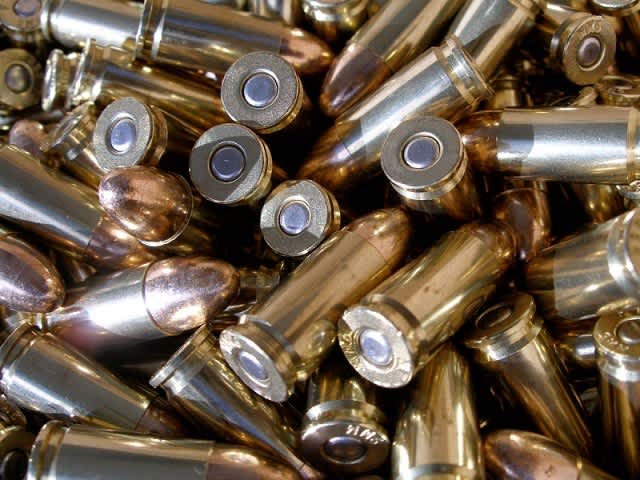New York State’s New “Microstamping” Bill is Just More Misguided Anti-gun Legislation
Matt Korovesis 06.20.12

Yesterday the New York State Assembly (the lower house of the state’s legislature) passed a bill that requires all new semiautomatic pistols sold in the state to be “microstamp-ready”, meaning they must be capable of printing a unique code onto an expended cartridge’s casing when the gun is fired. This monumentally confused and poorly thought out law is just another example of the misguided and ineffective legislation that’s been introduced across the United States to curtail firearms rights, whether it be intentional or not, in the past several years. I will highlight some of the major flaws with the bill, namely that it hinges upon an easily circumvented restriction and that it would create an insurmountable extra cost for firearm consumers of all varieties, before attacking its premises and stated intent.
As stated above, the text of the bill stipulates that all semiautomatic pistols (only semiautomatic pistols – so not revolvers or long guns) sold in New York after January 1, 2014 must be “microstamp-ready”. The bill officially defines that as being a pistol that “is manufactured to produce a unique alpha-numeric or geometric code on at least two locations on each expended cartridge case that identifies the make, model, and serial number of the pistol.”
This sentence alone should already have knowledgeable gun owners scratching their heads. Conventional wisdom leads us to conclude that the most effective way to stamp a casing in the way required by the law would be to place the stamp on the firing pin. However, anyone who’s taken apart a gun or looked at a picture of one disassembled knows that replacing a firing pin on most guns is a pretty easy task that involves a minimal amount of time and labor. All a potential criminal would have to do to get around a casing carrying their digits would be to perform a quick, easy and cheap swap of a firing pin. Here’s a video detailing just how simple it is for Glocks. It’s out in fifteen seconds. Replacement firing pins for most guns are also available from a wide variety of sources for very low prices. Unless every state in the union signs on to New York’s maddening bill, they’re going to have a rough time controlling an illicit flow of firing pins for criminals that would be dumb enough to have purchased a microstamped gun.
Firing pin replacement notwithstanding, I’d be very interested to see a microstamp-able firing pin that couldn’t have the “alpha-numeric or geometric code” stamp easily defaced.
The ease of getting around this would-be restriction isn’t the only issue of contention. The National Shooting Sports Foundation (NSSF) has a great informational document on how requiring guns to be microstamp-ready would increase the costs of firearms, and not only for consumers but for all other gun purchasers as well:
The price of firearms for all consumers, including municipalities and the State purchasing firearms for law enforcement agencies, would dramatically increase. The Sporting Arms and Ammunition Manufacturers’ Institute (SAAMI) estimates a price increase of approximately $200 per firearm. Firearms for the commercial, law enforcement and military markets are all manufactured at the same time on the same plant and equipment manufacturing processes. Companies do not have “law enforcement only” production lines and certainly do not have “California only” production lines. The cost would have to be spread across all products in all markets necessarily resulting in significantly higher prices for all products.
While it would be easy to hand-wave away a price increase for the civilian market, the same cannot be said for funding-strapped law enforcement agencies and military branches. Since manufacturers would certainly not retool their assembly lines to make microstamp-friendly firing pins to sell to a small, specific market, a bill like this would effectively ban all sales of semiautomatic pistols to civilians and perhaps law enforcement and military. That is, of course, unless a legislature grants exemption from this law to law enforcement and military, which will be an even more aggressive (yet indirect) ban on personal firearm ownership. But certainly firearms used by those groups can be used in criminal activities as well, so why would they want to do that?
Apart from these flaws, the bill is a product of a misunderstanding of gun crime. It assumes that the majority of firearms used in crimes are legally acquired. A report by the Justice Department published in 2001 found that 80% of state prison inmates who possessed a gun obtained it from friends, family, a “street buy”, or some other illicit source. If we acknowledge this fact, then who is this bill really targeting (no pun intended)?
Finally, I question the conclusion reached by one of the sponsors of the bill, Assemblyman Joseph Lentol, who is quoted in the release above. He alleges that the bill would “will also deter illegal gun traffickers from supplying violent criminals with weapons.” How does he imagine that would occur? Will the leaders of illegal gun trafficking rings be the first to line up outside the Microstamp-Ready Gun Store to buy up all the hot new easily-traceable firearms? Or would they continue to use non-microstamp-ready guns?
The only good news is that these bills have been introduced before and have floundered and failed, and this bill still has to face a vote in the New York State Senate. However, it is terribly disheartening to learn that bills such as these are even gaining ground or being passed anywhere, as low-level and unrealistic as they may be. We can only hope that common sense continues to prevail.
For those interested in reading more on the microstamping issue, I would encourage you to check out the NSSF’s page on the topic.

